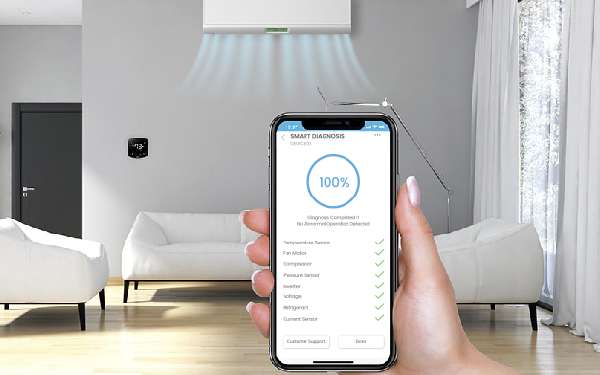In the age of smart technology, ensuring optimal performance of our home systems has never been easier. Among these systems, HVAC (Heating, Ventilation, and Air Conditioning) units play a crucial role in maintaining indoor comfort. A significant aspect of keeping an HVAC system running efficiently is regular filter replacement. This is where smart alerts for HVAC filter replacement come into play, transforming the way we maintain our indoor environments.

Understanding HVAC Systems
Before diving into the benefits of smart alerts, it’s important to understand the basics of an HVAC system. These systems regulate indoor temperature, humidity, and air quality. To function effectively, they rely on clean filters that trap dust, pollen, and other airborne particles, preventing them from circulating indoors.
The Importance of Filter Replacement
Regular filter replacement is essential for maintaining air quality and system efficiency. Dirty filters can lead to reduced airflow, increased energy consumption, and even system breakdowns. However, remembering to replace these filters can often be overlooked by homeowners.
Challenges in Manual Monitoring
Traditionally, homeowners would need to manually check their filters or follow a set schedule for replacements. This method is not only time-consuming but also prone to errors, as filters may require more frequent changes based on usage and environmental conditions.
Enter Smart Alerts
Smart alerts for HVAC filter replacement utilize advanced technology to monitor the condition of filters in real-time. These alerts notify homeowners when it’s time to change the filter, ensuring optimal system performance and air quality.
How Smart Alerts Work
These systems are equipped with sensors that track airflow and pressure within the HVAC unit. When a filter becomes clogged, the system detects changes in these parameters and sends a notification to the homeowner via a smartphone app or email.
Benefits of Smart Alerts
- Convenience: Receive timely notifications without the need for manual checks.
- Energy Efficiency: Maintain optimal airflow, reducing energy consumption.
- Cost Savings: Prevent costly repairs by addressing issues before they escalate.
- Improved Air Quality: Ensure a healthier indoor environment with clean air.
Integrating Smart Alerts with AI
By integrating Artificial Intelligence (AI) with smart alerts, homeowners can benefit from predictive maintenance. AI can analyze data trends and predict when a filter will need replacement, offering a proactive approach to system maintenance. For more on this, visit AI predictive maintenance.
Real-World Applications
Many homes and businesses are already leveraging smart alerts for their HVAC systems. Companies like Evans Plumbing are at the forefront of utilizing AI to enhance HVAC efficiency and reliability.
Choosing the Right Smart Alert System
When selecting a smart alert system, consider factors such as compatibility with your existing HVAC unit, ease of installation, and user-friendly interface. Additionally, look for systems that offer integration with other smart home devices.
Top Features to Look For
- Real-Time Monitoring
- Customizable Alerts
- Energy Reports
- Integration with Smart Home Systems
Installation and Setup
Installing a smart alert system is typically straightforward. Most systems come with detailed instructions, and many can be set up by the homeowner. However, for complex systems, professional installation might be recommended.
Professional vs. DIY Installation
While DIY installation can save costs, professional installation ensures optimal setup and performance. Professionals can also provide insights into system customization and maintenance.
Maintaining Your Smart Alert System
Regular maintenance of the smart alert system is crucial for its longevity and performance. This includes software updates and periodic checks to ensure the sensors are functioning correctly.
Troubleshooting Common Issues
If you experience issues with your smart alert system, refer to the manufacturer’s troubleshooting guide. Common problems include connectivity issues and sensor calibration errors.
Future of Smart Alerts in HVAC Systems
As technology advances, we can expect further innovations in smart alerts for HVAC systems. This includes enhanced AI capabilities and integration with other smart home ecosystems. For more information, explore AI in HVAC diagnostics.
Conclusion
Incorporating smart alerts for HVAC filter replacement in your home or business is a step towards more efficient, reliable, and healthier indoor environments. By leveraging technology, we can ensure our HVAC systems operate at their best, providing comfort and peace of mind.

FAQ
What are smart alerts for HVAC filter replacement?
Smart alerts notify users when it’s time to replace their HVAC filters, utilizing sensors and AI to monitor filter performance in real-time.
How do smart alerts improve energy efficiency?
By ensuring timely filter replacements, smart alerts help maintain optimal airflow, reducing the energy needed to operate HVAC systems.
Can smart alerts be integrated with existing HVAC systems?
Yes, most smart alert systems are designed to integrate with existing HVAC units, providing a seamless upgrade to your current setup.
This article contains affiliate links. We may earn a commission at no extra cost to you.
